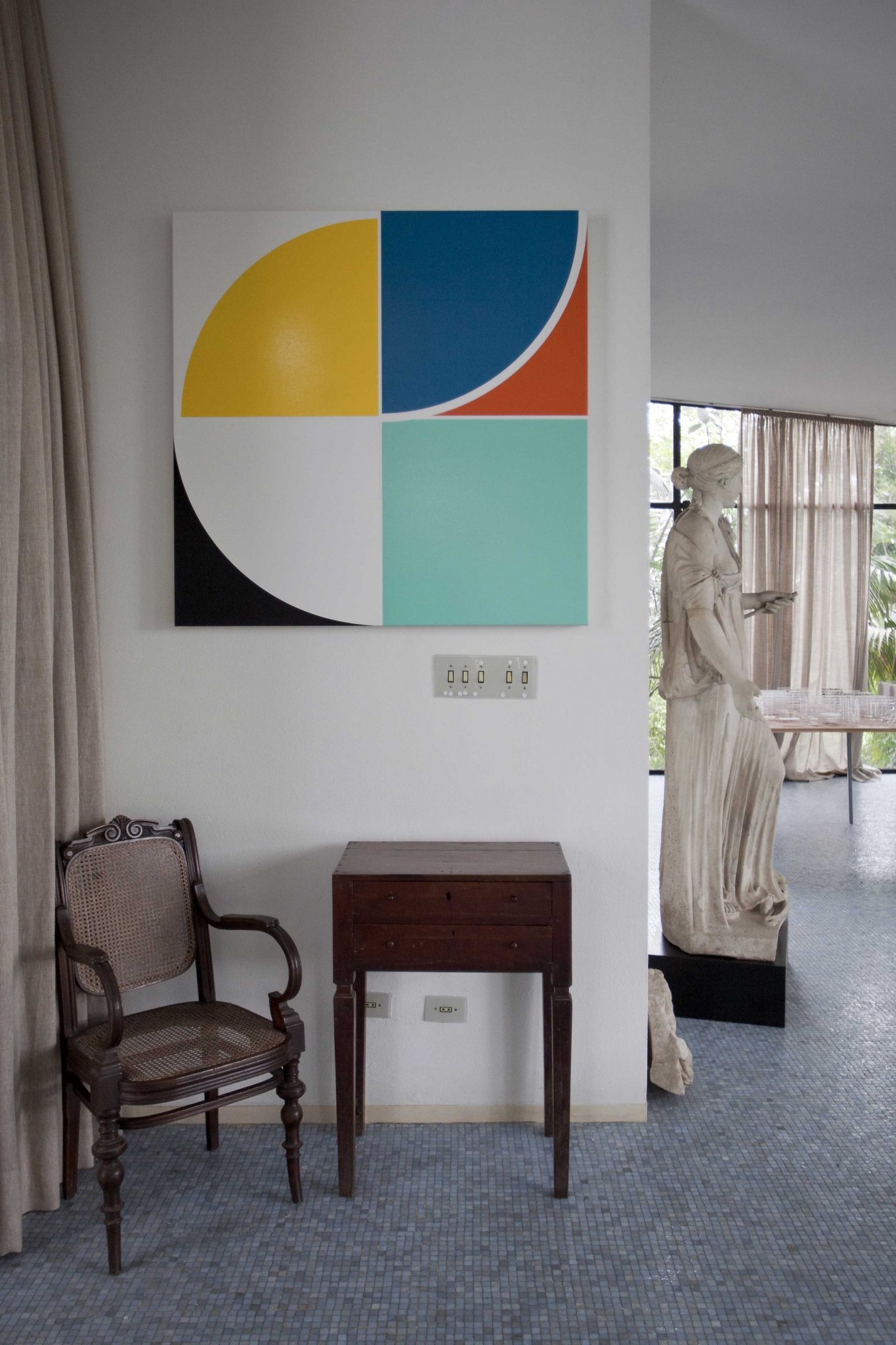Setting a major art exhibition inside modernist architect Lina Bo Bardi’s former residence Casa de Vidro, or Glass House, always risked the house’s lush surroundings overwhelming the art – not least due to the form of its wild gardens, a sensual jolt of jungle. Curator Hans Ulrich Obrist’s trick, with this group exhibition, is to enlist the house, gardens and contents, and inviting more than 30 Brazilian and international artists to work on a series of site-specific pieces: to ‘immerse themselves in Lina Bo Bardi’s world in order to establish intimate relationships with this singularly important figure’.
This exhibition, part of which also takes place at the magnificent SESC Pompéia culture and leisure centre Bo Bardi created between 1977 and 1982, is the latest in a series of ‘house- museum’ projects curated and conceived by Obrist, the most recent of which took place at the home of the poet Federico García Lorca, in Granada, in 2007–8.
In Cinthia Marcelle’s Audição (2012), performed during the ‘prelude’ at the Casa de Vidro in September 2012, 11 musicians simultaneously played different works, self-selected from the Bardis’ record collection, resulting in an evocative, dreamlike orchestral composition. A recording of the performance now plays on the record player in the living room. All around it, newly commissioned artworks mix with pieces from the Bardis’ collection: a marble statue of Diana from the fifth to first century BC alongside a Sarah Morris painting, Lina Bo Bardi (2013), describing the curves of Bo Bardi’s nearby 1951 Bowl chair.
A reworked vintage portrait of Bo Bardi, installed on the glass facing into the house by the contemporary artist Renata Lucas and a pair of 1948 cartoon portraits of Bo Bardi and her husband, Pietro, by Alexander Calder, are the most literal representations of the house’s charismatic former inhabitants. And while pieces by some of the most interesting young talents in Brazilian art approach the house from oblique angles – eg, Jonathan de Andrade’s hundreds of glass plaques, bearing images of an abandoned, flooded modernist yacht club, snaking around the floor and Paulo Nazareth’s rough concrete watermelons and bananas – Rivane Neuenschwander’s intervention nails it with all the grace and harmony of simplicity.
Taking Bo Bardi’s love of Brazilian vernacular art as her inspiration, and with a nod to the elegant furniture she created for the Casa de Vidro, Neuenschwander presents a set of found, handmade stools – one from a street seller in Bahia, north Brazil, where Lina spent some of the most fulfilling years of her professional life; one found in a carpark; another fished from a skip. Reconditioning them without compromising their spontaneity, Neuenschwander places them inside the house, infiltrators from the world of folk design. An elegant red number can be found in the master bathroom, and another, in the radiant magenta of purpleheart wood (roxinho), sits at Bo Bardi’s work desk as if it had always been there.
Olafur Eliasson’s work also strikes a harmonious tone: Fading Self Wall (2013) sees a large looking glass set on one of the plinths Bo Bardi created to display artworks inside the MASP museum – an unparalleled glass-and-crimson structure, and her most famous architectural work. The mirrored portion of Eliasson’s sheet of glass multiplies its immediate surroundings and the tangled green aura beyond the windows; then, as the mirroring gives way to an expanse of transparent glass, it reveals the entrance hall behind, seen across an internal courtyard in a confusion of reflection and refraction. The work’s many, complex lines of sight are in contrast with the more formal reflective interplay of an installation by Waltercio Caldas, in which mirrored bedroom walls reflect each other endlessly, their printed words, ‘camouflage’, ‘cylinder’ and ‘boomerang’, ricocheting back and forth to infinity across an ugly blue carpet.
Cildo Meireles’s intervention, Pietro Bo, is a bitter smell of roasting coffee that pervades the house and the garden studio, overlaid with a strident imitation of Pietro’s voice saying in Italian, “Lina, go and make some coffee!” As I lingered there one stormy afternoon in April, rain spattering the glass house, the voice soon became irritating – presumably Meireles’s intention. The phrase’s origins have been trotted out over and over in the material produced for and about the exhibition, as if it were some sort of explanation: that when talk veered towards a political disagreement at the Bardi house, Pietro would bark it out as if to end the discussion. The response of Bo Bardi, a profoundly erudite, opinionated woman, and a former member of the Italian Communist party, is recorded nowhere – except, perhaps, in the hearts of invigilators, who have to listen to the recording all day long, dreaming that Bo Bardi might materialise to put a stop to it once and for all.
This article was first published in the Summer 2013 issue.
